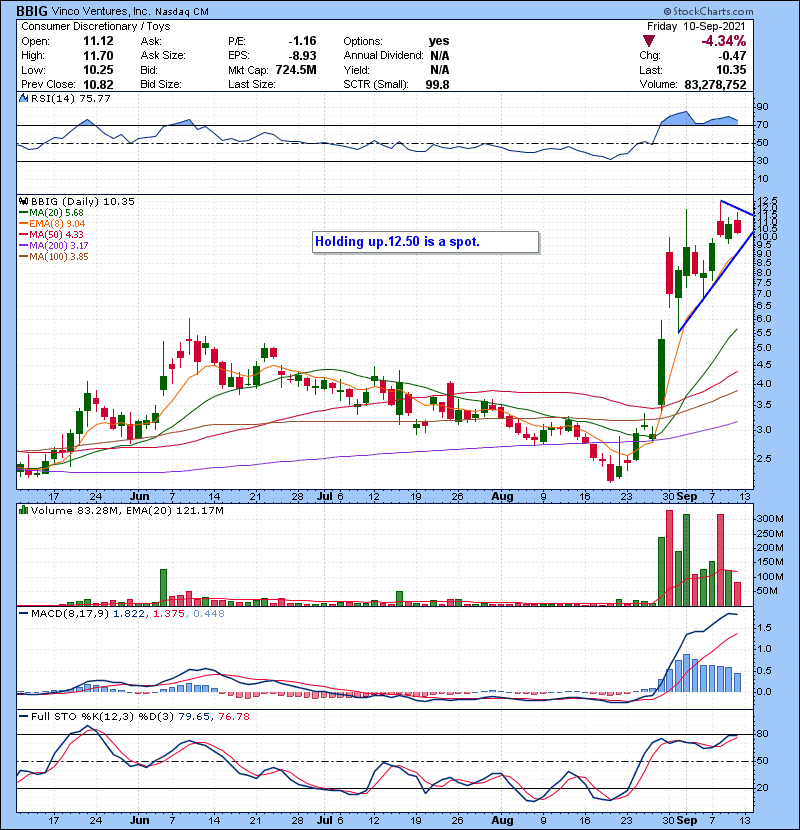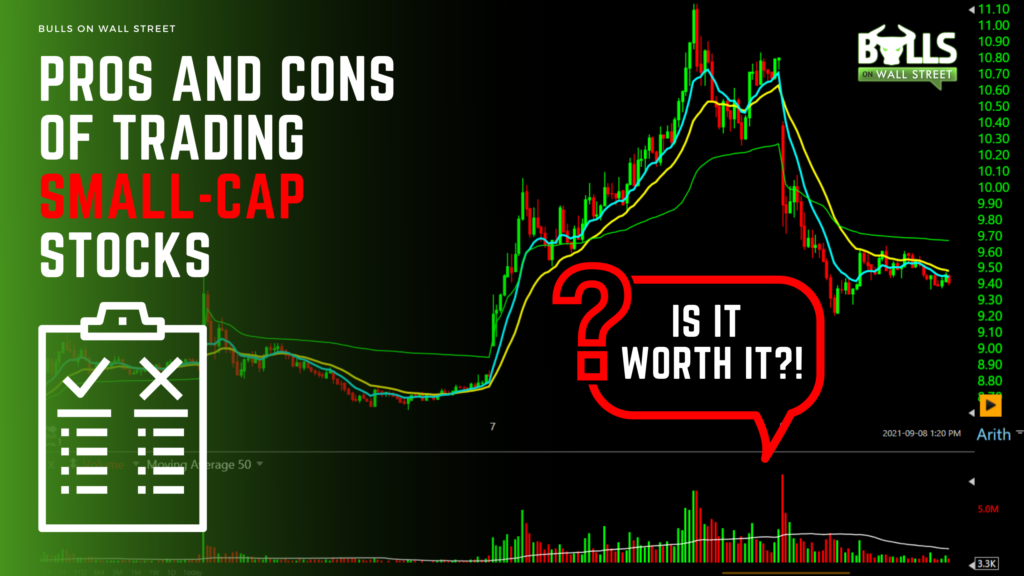Most new traders are drawn into trading small-cap stocks by the prospect of making 100’s of percent returns in a few hours. They expect to turn $1000 into $10,000 in a week because they are going to buy the next Amazon.
These are all the wrong reasons to be trading them. We know many successful small-cap and small-cap stock traders. We have a few traders in our chatroom who have made small-caps their primary niche. There are a ton of opportunities to the long and short side on these names.
But the trading style is not suited for everyone. And most do not understand the challenges of maintaining trading consistency in the niche. If you are considering trading small-caps, you need to know what you’re getting into. Trading them is not as easy as most trading services make it seem.
What Are Small-Cap Stocks?
Small-cap stocks are stocks with market capitalization between $300 million and $2 billion (A company’s market capitalization is the market value of its outstanding shares). These stocks are typically the ones that trend on Twitter the most these days, and often have cult-like followings. They are high risk and high reward. Learn the pros and cons of trading small-cap stocks, and make sure you know what you’re getting yourself into:
Pros
Don’t Need Much Capital
Whether you are buying or shorting small-caps, you don’t need to have much money to be able to make solid returns. When you trade a bluechip stock like Facebook, which trades at around $375 a share at the moment, you need to have tens of thousands of dollars to get a worthwhile return from trading or investing in it, and it moves 1-2% a day.
With volatile small-cap stocks, you only need to buy 500-1000 shares of a stock like $BBIG to make solid. But: Higher risk, higher reward. That being said, this doesn’t mean you SHOULD invest in them, as most of these companies fail in the long run, and you will lose your money. Small-cap stocks should be treated as short-term trading vehicles, not as long-term investments. If you follow a proven strategy and have sound risk management, you can potentially trade these successfully and make good money.
Large Range
As you have probably seen, small-caps can get some crazy momentum once volume and buyers come in. 50%-100% moves happen usually on a monthly basis in the rabid bull market we have been in for the last decade+. The large range can provide amazing trading opportunities if you can time your entries and exits correctly.
Fast Moving
Small-cap stocks will often make these huge percentage moves in just a few hours or days. BBIG ran from about $3 to $12 a couple weeks ago in just a few days:

Small-cap stocks will sometimes rip 50%-100% in just an hour at the market open. These things move fast, so you have to be very quick to capitalize on these opportunities to the long or short side.
Cons
Many Fade Their Gaps
The majority of small-cap stocks are garbage companies. This doesn’t mean you cannot make money off them to the long side, as many small-caps with awful fundamentals will go on monster runs. But you should understand that 95% of small-cap stocks that gap up on some type of news will NOT make a multi-day $BBIG-like move.
You have to nail and bail. Most of the time small-cap stocks gapping up big, even with a positive catalyst, will get sold into hard, and fade off the whole day. Many novice small-cap traders get stuck holding the bag and lose a ton of money because they buy and hold too long. Don’t chase these stocks blindly. If you do trade these, be sure to take your profits when you have them.
More Manipulation
Because small-cap stocks have low market caps, it doesn’t take much money (for Wall Street players) to move these markets. If we look at a small-cap stock like $BIGC, its float is only 10 million shares, and it trades at about $5 a share. It only takes 10 million dollars to buy up 20% of its float. Just a drop in the bucket for most Wall Street funds.
These big players can buy up these names and send them a skyrocketing price. But they want to sell eventually. They know that these companies are garbage also. They will eventually exit their positions. And when this happens, the stock comes crashing down.
Timing is Difficult
You see a stock that ran from $5 to $70 and thinks that it was obvious in hindsight. But it wasn’t so obvious when you were in the moment staring at the stock when it was trading at $5. How do you know this is the one that goes to the moon? If you buy these junk small-cap stocks that gap up on some type of news with the expectation of doubling or tripling your money, you will fail hopelessly and lose all of your money.
Buying or shorting these stocks at the correct times is extremely difficult. These huge moves up only happen in a few minutes, and no one really knows if it will continue the trend when it’s up 100% or dump and give up all its gains. If you are looking to short these because they are junk companies, you can risk losing a ton of money if you mistime it and get stubborn. Even if you right 99 times out of 100 on your shorts, it only takes 1 $BBIG to wipe you out if you get stuck short.
Stressful
There are wild swings when you trade small caps. Sometimes it will make a 100% move up, and then dump 30%, then go up another 50%, and then dump 50%. It is stressful as F*** to trade these, even if you just take a small $5000 position in them.
99% of small-cap traders fail because they have no system or risk management. You don’t need to trade small-cap stocks if you have a small trading account. You can still make great returns trading mid and large-cap stocks with WAY less stress. This is why we focus on slightly higher-priced names at BOWS that have momentum. They offer slightly less range, but they are much higher probability plays, less stress, and are more predictable.
Summary
Small-caps can provide some amazing opportunities due to their range, especially the low float ones with high relative volume. But most traders underestimate how difficult it is to capitalize and actually make money from these stocks. Small-cap stocks are very unpredictable, and timing entries and exits are difficult. Do not trade them if you do not have a system with an edge and sound risk management. Always have a plan.
Live Trading Classes From Experienced Traders: Join Our Live Trading Boot Camp
Space fills up fast in our boot camps. Apply for your seat to see if you qualify!


